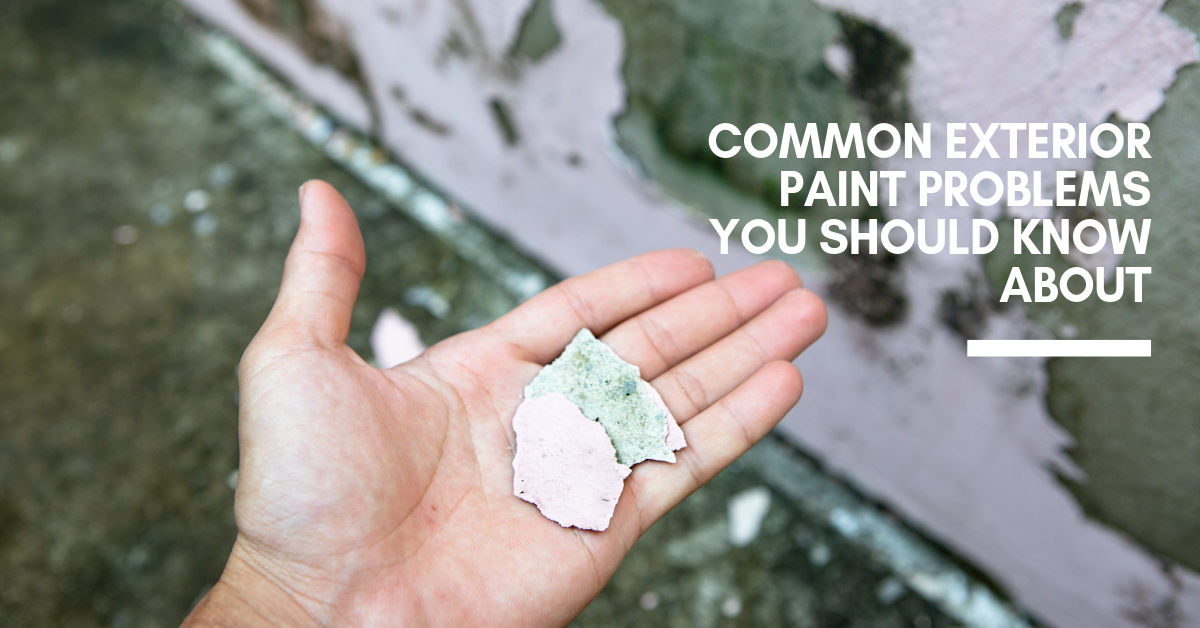When you hire professionals to paint your home, you expect beautiful, long-lasting results, but that’s not always what you’ll get.
Less skilled and less honest painters can cut corners and leave you with exterior paintwork that is patchy or starts fading or peeling within a few years.
If you’ve moved into a home with poor paintwork or your house is in need of repainting, understanding these common causes of exterior paint problems will help you avoid them in the future and ensure a quality paint job.
- Related article: 5 Amazing Benefits of Repainting Your House
Table of Contents
Common Causes Of Exterior Paint Problems
Why does exterior paint peel prematurely?
If paint is peeling down to the bare timber or masonry, the problem has likely been caused by moisture trapped inside the wall.
The house may have ventilation or dampness issues due to unsealed joints, worn sealant or leaks, and repairs may be needed to remove the source of moisture prior to repainting.
Premature bubbling, blistering and peeling can also mean that the surface was painted when damp or it was not properly prepared.
If you can see the previous coat of paint under a paint blister, then the problem has likely resulted from applying the topcoat before the undercoat was thoroughly dry, or from using cheap or incompatible top and base coats.
You cannot paint acrylic paint over an oil-based paint, the paint will start peeling off almost immediately.
A special primer must be applied first to avoid this major exterior paint problem.
What makes exterior paint look patchy?
Patchy or discolored areas in paintwork tell you that the paint might have been applied to a dirty or wet wall.
Over time, walls pick up dust and grime that can interfere with paint adhesion, so even a relatively clean wall should be washed before it’s painted.
After cleaning, the wall should be allowed to dry thoroughly.
Patchy paint may also be caused by using only one coat of paint instead of two, as one coat can let the old paint show through and fail to cover a wall’s minor irregularities.
What causes paint drips and runs?
Drip marks typically mean the application of a coat of paint was too heavy and the brush was overloaded, the paint was too watery, or the paint was applied to a high-gloss surface that was not first primed.
All of these can prevent the paint from adhering evenly and cause the paint to run.
Why does house paint fade and lose its gloss?
This exterior paint problem can indicate that a low quality (or even interior) paint was used on an exterior paint job.
Some degree of fading and gloss loss can be expected over time on walls with exposure to the hot afternoon sun.
However, lower quality paints will generally lose gloss and color much earlier than high-quality ones.
To keep your paint color and shine for longer, use exterior paints that are especially resistant to UV radiation. We also recommend power washing your house every 18 months, as dirt is the biggest cause of painting breaking down.
What causes mold on new exterior paint?
Mold is a fungus that grows on the surface of paint or sealant in areas that tend to be damp and get little direct sunlight.
Mold can appear very quickly on new paint if a painter has used low-quality paint, failed to prime bare wood before painting, or painted over a surface without removing existing mold.
Professional painters in Virginia not only prepare the surface correctly, but they also use products with mold retardants to help walls stay mold-free.
Why does house paint crack?
Areas of cracked paint can result when the second coat of paint is applied before the first coat is dry.
This is particularly true when paint cracks in a scaly, snake-skin pattern, known as alligatoring.
Alligatoring can also be caused by the application of an extremely hard coating, like an oil-based enamel, over a more flexible coating, like an acrylic primer.
In very old oil-based paint, though, alligatoring is the normal result of ageing.
- Related article: Everything You Need to Know About Cracks in Plaster Walls
Why do rust stains show through paint?
If non-galvanized iron nails have been used or galvanized nailheads have begun to rust after sanding or weathering, the rust may bleed through to the top coat.
Virginia painters can minimize this by ensuring the nail heads are countersunk, filled over and primed.
If other stains are visible through the paint, this can be a sign that the painter didn’t apply primer, applied too little or applied the wrong kind.
Primer corrects minor surface flaws on the wall so the paint goes on smoothly, covers minor stains and lasts years longer than it would otherwise.
How To Avoid Exterior Paint Problems
While most professional painters take great care in their work, some skip steps in order to maximize their profits or offer cheap prices.
Knowing what causes common exterior paint problems means you’ll know what questions to ask a painter before you hire one, and once the job is underway, you’ll notice if your painter seems to be skimping on preparation so you can bring up your concerns immediately.
If you’re looking for experienced, reliable and ethical Virginia painters with a long track record of professional painting, please don’t hesitate to contact us.
Benjamin Painters also do plastering, staining and carpentry so we can usually take care of most repairs that are needed prior to painting.
Learn more about our painting processes, exterior painting services and see examples of our residential exterior work, or simply get a free quote now.



0 Comments